PDF of this article (321 KB)
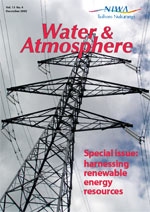
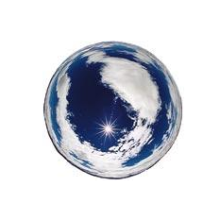
A 360-degree, all-sky image taken at NIWA in Lauder. (Photo: Mike Kotkamp)
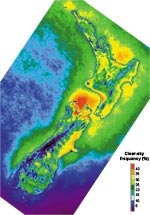
Fig. 1: Average percentage of clear skies over New Zealand recorded by satellite.
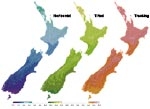
Fig. 2: Annual total energy in gigajoules (GJ) per m2 under clear skies when collectors are mounted in different positions.
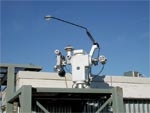
Solar tracking instrument. (Photo: Mike Kotkamp)
Ben Liley, Andrew Tait, and Greg Bodeker discuss what we know of New Zealand’s solar energy resource.
Solar radiation is the basis of most of our renewable energy. The sun’s heat evaporates water to condense as rain and snow for hydroelectric supply, and it creates the weather systems that give rise to wind and wave energy. Sunlight drives photosynthesis, directly or indirectly feeding almost all life on the planet, and so creating both modern biofuels and the fossil fuels from earth’s past. Solar heat and light can also be used directly, or converted to electricity using photovoltaic cells.
Incoming solar radiation
On average, 1360 watts of visible, infrared, and ultraviolet radiation from the sun passes through each square metre at the top of earth’s atmosphere. Only about half of this radiation reaches the ground; the rest is absorbed or reflected by gases, clouds, and dust in the air. Cloud is the most variable of these factors, changing with both time and location. On average, cloud reflects about 20% and absorbs about 4% of all incoming radiation, but this understates the immediate local effects. Available solar energy under cloud can be less than a tenth of clear-sky values.
NIWA measures solar radiation at over 90 sites around New Zealand, and hourly totals are recorded in the NIWA climate database. Most instruments measure global irradiance: the rate of energy flow per unit area on a horizontal surface. Using these observations, we can estimate available solar energy, as in the solar radiation map.
More detailed measurements are made at several key sites. At NIWA’s atmospheric research station at Lauder in Central Otago, the premier site in New Zealand for solar radiation study, the measurements include: separate direct sun and diffuse sky radiance; ultraviolet, infrared, and visible spectra; all-sky images analysed for cloud cover; and a wide range of atmospheric-gas concentrations. These detailed measurements are used to support and interpret the national climate data series of solar radiation.
Effects of cloud
To better understand the patterns of cloudiness that determine the availability of solar energy, we use satellite images of New Zealand to make maps of average cloud cover and type. Figure 1 shows the average percentage of clear skies as the satellite passed overhead.
Combining this pattern of cloudiness with the effect of latitude (the sun angle, discussed below) explains much of the pattern in measured irradiance. The higher proportion of clear-sky days around Nelson and Blenheim, and over the Manawatu, Bay of Plenty, and Hawke’s Bay, explains the higher solar irradiance there, and Northland benefits from its higher sun angles. The relationship is more complex for Canterbury through to Central Otago, as cloud type and thickness make more difference here. NIWA research is developing a better understanding of these effects, leading to better maps of surface radiation and better prediction of available energy.
Harnessing solar energy
Two-thirds of energy use in New Zealand homes is for heating – one-third for space heating and another third for water heating. The solar energy arriving at the roofs of New Zealand homes over the course of a year is twice the country’s total annual energy consumption, or 16 times the energy used in those homes. Of course it arrives only by day, and mostly over the summer months, but sensible design to trap solar heat in winter (and shade from it in summer) can greatly reduce household energy use. NIWA data on solar energy, including cloud effects, are contributing to research on energy efficiency and comfort in homes and commercial buildings.
Solar water heating, for homes and for swimming pools, is well-proven in New Zealand. About 2% of homes have such systems, and more are installed each year. For an average home using one-third of its energy to heat water, substantial savings in electricity use are possible. Solar water heating has the benefit of storing energy through the day, and it works well as a booster for other water-heating systems. Thermal efficiency is typically about 50% for a heater operating at 70 °C, but declines at higher temperatures.
Optimising the energy capture
The angle of a solar-capture device to the sun has a marked effect on the energy that can be harnessed. Figure 2 demonstrates how much energy is available annually for various tilt angles and clear skies. On a horizontal plane the effect of latitude is large; for any given date and time the sun is lower in the sky for southern locations, reducing efficiency for bright sunlight. Tilting the panel toward the north increases the capture, to the extent that clear-sky energy reaching a tilted panel in Southland exceeds the horizontal irradiance for Northland. The optimal angle is often quoted as being equal to the latitude: at 41° S the panel should be raised 41° above horizontal. We have modelled this effect, correcting for cloud cover, and conclude that the angle should, in theory, be even greater than latitude for maximum annual energy capture, though the additional change is small. Seasonal variation in demand and water-heater efficiency have a large effect on optimal tilt.
In practice, solar water heaters will often be mounted against an existing roof, which is probably tilted to less than the latitude, and not facing due north. Models for the effect of tilt on panel performance are being tested and refined using NIWA radiation and cloud data.
As expected, tracking the sun produces an even greater increase in collection efficiency, as seen in the third map. The cost and energy use of a tracking system needs to be factored in, but with systems to generate electricity it may be cost-effective. Tracking is essential for systems that require the full intensity or, even more, the concentration of direct solar radiation.
Photovoltaic cells have improved rapidly in efficiency and cost effectiveness over the last decade. They are already used in many consumer devices and in remote locations (for example, to power some of NIWA’s climate stations), and are poised to become a significant renewable energy source. As use of these cells expands, NIWA research will help to optimise their performance.
Here comes the sun
- Solar energy is the basis of most renewable energy.
- The sun angle and degree of cloudiness are key determinants of the solar resource.
- Ground-based and satellite measurements can tell us the size and variability of the resources throughout New Zealand.
- Tracking can help optimise the capture of solar energy.
Ben Liley and Dr Greg Bodeker study atmospheric processes and radiation at NIWA in Lauder. Dr Andrew Tait studies climate variability at NIWA in Wellington.
Teachers’ resource for NCEA AS: Science 90191 (1.6); Physics 90253 (2.2). See other curriculum connections at www.niwa.co.nz/pubs/wa/resources
